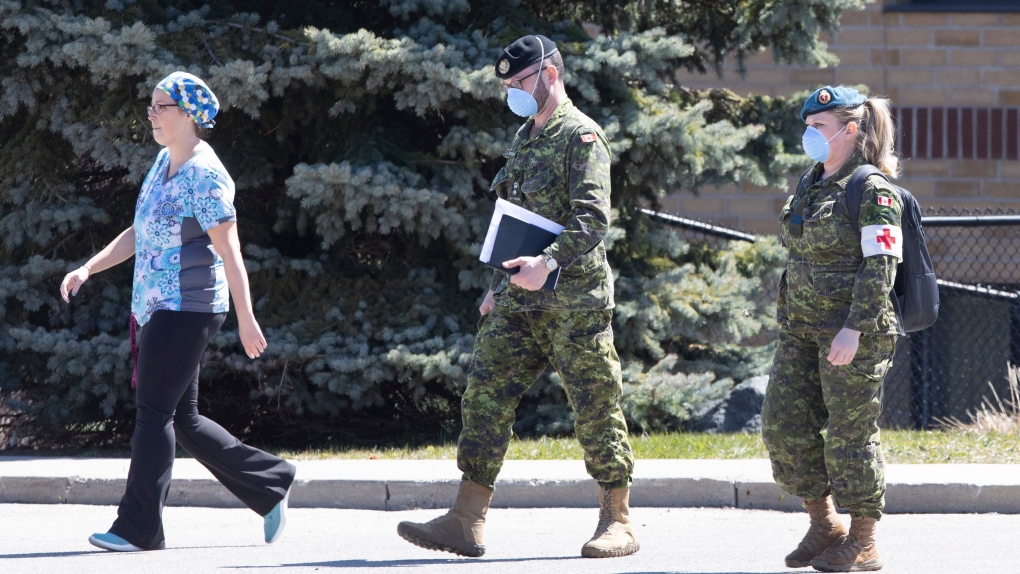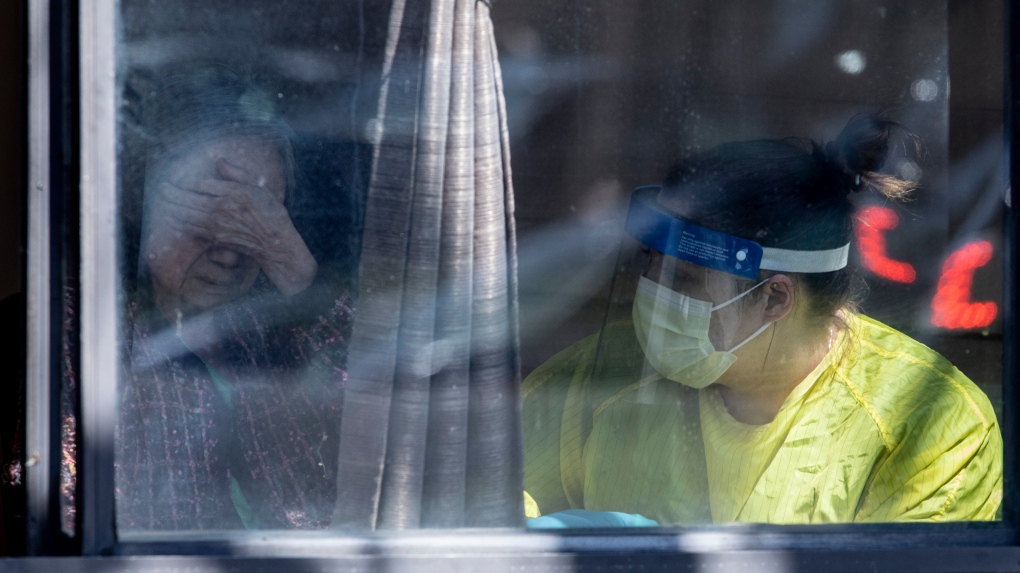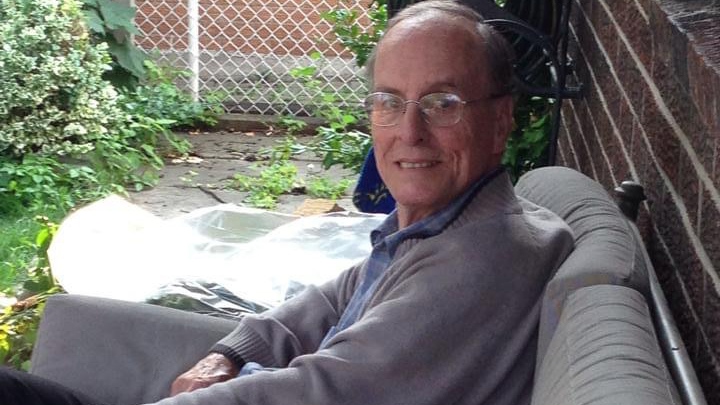Ontario long-term care company accused of leaving residents 'soiled in diapers' will get millions for new beds
The Doug Ford government says it has allocated hundreds of beds to the Ontario for-profit long-term care chains at the centre of a military report that shocked the nation more than a year ago with details of horrifying conditions and neglect.
Southbridge Care homes, which owns Orchard Villa, a long-term care home where 70 people died amid the COVID-19 pandemic, is in the running to get public funds to build 722 new and 1,070 redeveloped beds—a move that critics say “rewards” the companies behind the deadliest homes.
CTV News Toronto is working on a five-part series looking at one company at a time, and the potential beds the province has in store for them, guaranteeing their future.
PART ONE: SOUTHBRIDGE CARE HOMES
The Canadian Armed Forces first got the call in April 2020 to help five long-term care homes in Ontario grappling with severe COVID-19 outbreaks and staffing shortages, including Southbridge Care Homes’ Orchard Villa in Pickering, Ont.
A month after their mission, the military published a scathing report, written by Brigadier-General C.J.J. Mialkowski, detailing allegations about the conditions inside the homes, confirming the worst fears of families whose loved ones had died within their walls.
Inside Orchard Villa, the military observed cockroaches and flies, noting how the smell of rotting food wafted through the hallways outside patients’ rooms. Mialkowski described how they saw seniors in great discomfort, left in their beds with “soiled diapers,” unable to go to the bathroom.
As staffing levels collapsed to approximately 20 to 25 per cent of the normal levels, the military said it witnessed that personal support workers and nurses did not always have the time to position residents properly while they ate or drink, and that “choking/aspiration risk is therefore high.”
“Respecting dignity of patients not always priority,” he listed. “Lack of knowledge as to what qualifies as restraint. Multiple scenarios of walking aids being removed, or mattresses set on floor as patients were unable to stand from that low position (to prevent them from wandering).”
He said they saw food and important belongings placed out of residents’ reach, and noted how nurses appeared to document assessments without actually assessing the patients. He said residents were sometimes sleeping on “bare mattresses” because clean linen was inaccessible.
 A staff member escorts members of the Canadian Armed Forces in to Orchard Villa Care home, in Pickering, Ont. on Saturday, April 25, 2020. THE CANADIAN PRESS/Chris Young
A staff member escorts members of the Canadian Armed Forces in to Orchard Villa Care home, in Pickering, Ont. on Saturday, April 25, 2020. THE CANADIAN PRESS/Chris Young
The military described in its report how staff did not wear personal protective equipment properly and how there was “no accountability” for not following basic care needs, infection control procedures or best practises. The report also indicated there was poor communication between management and housekeeping, which led to residents being moved to rooms that were not cleaned.
In the end, 70 people died due to COVID-19 at Orchard Villa, making it the home with one of the highest deaths rates in the province. According to provincial government data, roughly 212 people have died inside homes owned by Southbridge during the COVID-19 pandemic so far. Southbridge had one of the highest death rates among its for-profit peers.
Families of residents at Orchard Villa reported that many of their loved ones died alone in their rooms, unable to be helped or seen by loved ones.
At Orchard Villa, many families say they didn’t even know their loved ones were ill before they died because no one at the home gave them updates. Due to the staff shortage, workers didn’t have time to pick up the phone as they scrambled to provide basic care and arrange end-of-life care for those already dead, while phone calls to management, families say, were left unanswered.
ONTARIO ALLOCATES BEDS DESPITE PERSISTING PROBLEMS
As part of its most recent budget and campaign promise, the Progressive Conservative government has promised to add 30,000 new long-term care beds over the next 10 years, adding that 20,161 new and 15,918 upgraded beds are in the “development pipeline.” After Southbridge Care Homes applied for some of those beds, the government allocated the company 733 new and 1,070 redeveloped beds.
A spokesperson for the Ontario Ministry of Long-Term Care told CTV News Toronto that the COVID-19 pandemic revealed the need to update and modernize long-term care homes, which means that even for-profit homes will get public funding to fix the issues in their facilities and build new beds.
“The ministry’s evaluation process prioritized redevelopment of older homes to implement the lessons learned on improved infection prevention and control measures, particularly the elimination of three and four bed ward rooms,” the spokesperson said.
Southbridge can now use its allocated beds for certain projects, which then have to undergo a consultation process. The Ministry of Long-Term Care has so far approved four 160-bed long-term care homes projects in London, Thunder Bay, Kemptville and Cornwall, Ont. Each Southbridge-owned facility will be granted a 30-year licence, and will get tens of millions in public funds.
A decision has not been made yet on two of Southbridge’s projects, including the development of a long-term care home in Port Hope, as well as an expansion and redevelopment project and the license renewal of Orchard Villa, which would allow the facility to increase from 233 beds to 320 beds.
 A COVID-19 positive resident, identified as Flora sits with a member of staff after receiving an absolution from a priest, at Orchard Villa Care home, in Pickering, Ont. on Saturday, April 25, 2020. THE CANADIAN PRESS/Chris Young
A COVID-19 positive resident, identified as Flora sits with a member of staff after receiving an absolution from a priest, at Orchard Villa Care home, in Pickering, Ont. on Saturday, April 25, 2020. THE CANADIAN PRESS/Chris Young
Natalie Mehra, the executive director of the Ontario Health Coalition, said she had been keeping a close eye on the consultation processes for the worst homes, including Orchard Villa and she is not satisfied with the government’s process.
“That consultation process was actually something we fought for in the 2007 Long-Term Care Home Act. They have to do it, but I have to tell you, I mean they're just doing the most perfunctory job of it,” she said.
“They are holding the hearings, yes, but they're still awarding the beds, even after every single person in the hearing, says that they don't want to see that company being awarded those beds.”
Cathy Parkes, whose father, Paul Parkes, died due to COVID-19 at Orchard Villa, said she sat in on the consultation process for Orchard Villa on July 15 and felt very discouraged.
“It was such a disaster,” she said. “We were told we were only allowed to ask questions about the new facility and anytime that anyone mentioned the history of the home, the moderator actually stopped people.”
In a statement to CTV News Toronto, Beryl Collingwood, a vice-president at Southbridge Care Homes said the company has made several changes at Orchard Villa since the pandemic, and after so many seniors died. He said a “redeveloped Orchard Villa” would be better for residents.
“A redeveloped Orchard Villa would support infection prevention and control by providing us with the ability to isolate ventilation and HVAC for each floor in the event it is required,” Collingwood said.
“The new design would also implement new, innovative technologies to enable electronic monitoring for contact tracing and would be built in accordance with the standards set out in the Ontario government’s Long-Term Care Home Design Manual.”
The Ontario Ministry of Long-Term Care would not say if Southbridge Care Homes faced any penalties because of what happened inside Orchard Villa. A spokesperson for the ministry told CTV News Toronto that the province completed comprehensive inspections at the seven homes mentioned in the Canadian Armed Forces report published on May 20.
“In each inspection, at least two ministry inspectors were onsite for at least 10 days at each of the homes and some for even longer,” the spokesperson said in an email. “The inspections did not trigger police investigations.”
When a home is found to have violated the Long-Term Care Homes Act, a number of steps can be taken, the most common action taken by inspectors is issuing a “written notice,” which means a home is notified they did something wrong and asked to fix it. Often times the issues persist after a written notice is issued, as there is no guaranteed follow up.
Inspectors can also issue a “voluntary plan of correction” that requires a licensee to come up with a plan to fix the problem, which the inspectors can then choose whether to follow up on or not. The province can also implement Compliance Orders, which guarantees a return visit from inspectors to follow up.
 Orchard Villa care home is shown in Pickering, Ont. on Monday April 27, 2020 THE CANADIAN PRESS/Frank Gunn
Orchard Villa care home is shown in Pickering, Ont. on Monday April 27, 2020 THE CANADIAN PRESS/Frank Gunn
The harshest punishment that can be issued against a long-term care home is a "director's order," which can result in a home being placed under new management and a revocation of license.
The province’s inspection report on Orchard Villa, which saw inspectors at the home on various days between May 20 and June 2020, echoed many of the concerns noted in the military report. It found the home had violated several sections of the Long-Term Care Homes Act.
As a result, Southbridge Care Homes got 13 written notices, nine voluntary plans of correction, and two compliance orders. However, when inspectors returned months later, they found the home continued to fail to comply with the act.
A January 2021 report notes, that in Dec. 2020, during the second COVID-19 wave, inspectors noted that due to staffing shortage, “basic care including bathing/showering, oral hygiene, nail care, assistance with eating and drinking and fall prevention monitoring was not provided.”
An April 2021 inspection, detailed how a resident, who just returned from hospital and was placed in isolation for COVID-19 for 14 days, could be seen outside their room without a mask. It also noted the licensee failed to ensure that the home was a safe and secure environment for residents through active screening measures.
In addition, just this past summer, an inspection report from July notes the licensee failed to ensure that the staff followed the home's infection prevention and control practices, resulting in three written notices and one compliance order.
Despite all that, the government says it will continue to work with its “partners” across the sector, including Southbridge, and together build the future for long-term care in Ontario.
'IN WHOSE INTERESTS ARE THEY RUNNING?'
A future where Southbridge Care Homes continues to expand is one Cathy Parkes is afraid of after losing her father.
She said her father had “no fighting chance” at Orchard Villa. She said the home refused to put him on oxygen to help with his breathing before he died, and that the home left her in the dark as she heard reports of severe staff shortages.
“Long-term care is so incredibly broken and, and it's something that we rely on. A lot of Ontarians rely on long term care, and if we don't fix it … I just think like what would happen if my mom eventually has to go into it,” Parkes told CTV News Toronto. “It's a scary, scary place. It was scary before, and now it's 10 times worse.”
“I don’t want my dad’s death to be in vain. I don’t want long-term care to continue the way it is.”
 Durham Region resident Cathy Parkes says her father Paul Parkes died due to COVID-19 at Orchard Villa during the first wave of the pandemic. (Supplied)
Durham Region resident Cathy Parkes says her father Paul Parkes died due to COVID-19 at Orchard Villa during the first wave of the pandemic. (Supplied)
Natalie Mehra said it’s time the government rethinks the way long-term care is developed in Ontario and create a new process that supports and prioritizes the not-for-profit sector and the municipalities to build and rebuild the long-term care beds as needed.
According to data collected by the Ontario Health Coalition, the COVID-19 death rate during the pandemic for-profit long-term care homes is about nine per cent, comparatively, in not-for-profit homes it stood at 5.25 per cent and, in publically-owned homes, the number dropped to 3.62 per cent.
“The public is paying for these beds anyways so there's no reason whatsoever to go through another generation of for-profit long-term care,” Mehra said. “When have you ever seen 4,000 people die in a year and a half, most of them preventable? That's just from COVID alone. It doesn't include the people who died of starvation and dehydration.”
“At the very least, in their memory, we could rethink how we're doing things, like who owns these homes, and in whose interests are they running.”
FORGOTTEN: Part two will be released tomorrow on CTVNewsToronto.ca
CTVNews.ca Top Stories

opinion Tom Mulcair: Prime Minister Justin Trudeau's train wreck of a final act
In his latest column for CTVNews.ca, former NDP leader and political analyst Tom Mulcair puts a spotlight on the 'spectacular failure' of Prime Minister Justin Trudeau's final act on the political stage.
B.C. mayor gets calls from across Canada about 'crazy' plan to recruit doctors
A British Columbia community's "out-of-the-box" plan to ease its family doctor shortage by hiring physicians as city employees is sparking interest from across Canada, says Colwood Mayor Doug Kobayashi.
'There’s no support': Domestic abuse survivor shares difficulties leaving her relationship
An Edmonton woman who tried to flee an abusive relationship ended up back where she started in part due to a lack of shelter space.
opinion King Charles' Christmas: Who's in and who's out this year?
Christmas 2024 is set to be a Christmas like no other for the Royal Family, says royal commentator Afua Hagan. King Charles III has initiated the most important and significant transformation of royal Christmas celebrations in decades.
Baseball Hall of Famer Rickey Henderson dead at 65, reports say
Rickey Henderson, a Baseball Hall of Famer and Major League Baseball’s all-time stolen bases leader, is dead at 65, according to multiple reports.
Arizona third-grader saves choking friend
An Arizona third-grader is being recognized by his local fire department after saving a friend from choking.
Germans mourn the 5 killed and 200 injured in the apparent attack on a Christmas market
Germans on Saturday mourned the victims of an apparent attack in which authorities say a doctor drove into a busy outdoor Christmas market, killing five people, injuring 200 others and shaking the public’s sense of security at what would otherwise be a time of joy.
Blake Lively accuses 'It Ends With Us' director Justin Baldoni of harassment and smear campaign
Blake Lively has accused her 'It Ends With Us' director and co-star Justin Baldoni of sexual harassment on the set of the movie and a subsequent effort to “destroy' her reputation in a legal complaint.
Oysters distributed in B.C., Alberta, Ontario recalled for norovirus contamination
The Canadian Food Inspection Agency has issued a recall due to possible norovirus contamination of certain oysters distributed in British Columbia, Alberta and Ontario.


































